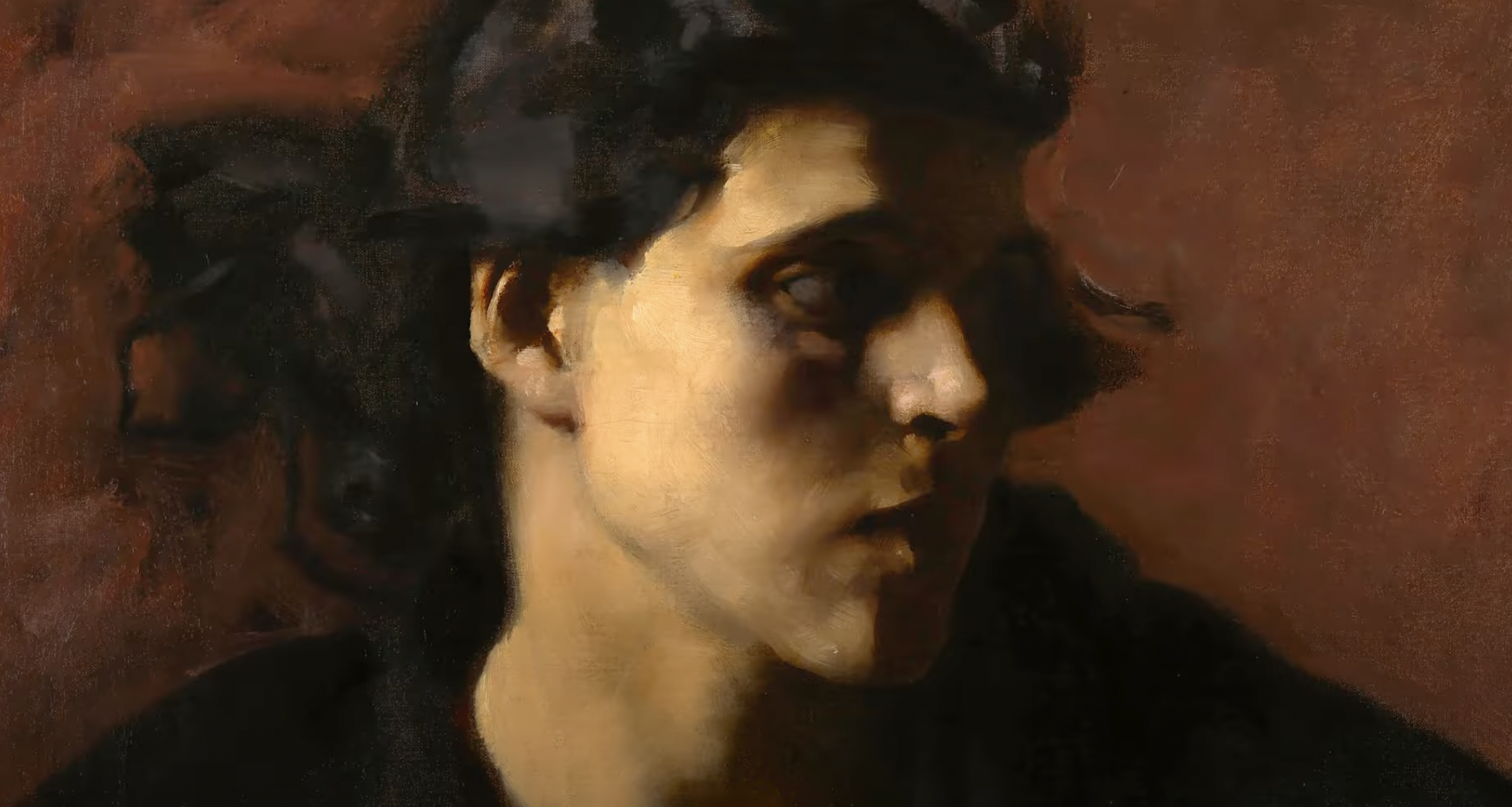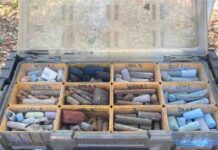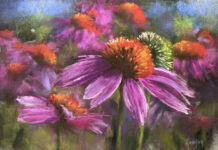I’m excited to start asking the Pastel Today Advisory Board a new question which is: Do you have a creative prompt or easy-to-follow exercise that you use in your workshops or classes that you wouldn’t mind sharing?
And today, we have Casey Klahn to answer the question!
The question arises about the role of nature in my art. I heard David Hockney say in a video that one can’t make up nature; it’s too complex. Vincent van Gogh and Henri Matisse demanded that they have a model to look at, whether it be a human sitter or a flower in the hand holding the sketchbook.
On the other hand, Picasso was known for using imagination as a source but if you dig a little you see his natural sources. I do like to use memory and incidentally, Edgar Degas was big on memory, but only after rigorous and long efforts drawing from life.
“From life” is not “from your own photographic source.” I’m sorry to say it but there is so much that is missed by not taking the trouble or the commitment to stand in front of your subject and risk “wrongness.”
A photo is a handrail or a walker. It’s training wheels. What good is veracity if life is absent from your drawings? Be bold! You do make mistakes or lose details when you have the limits of nature to contend with. The model gets tired, the light on the landscape changes, or it starts to snow or rain – all these challenges hurry you as you try to get the image on paper. But didn’t Paul Cezanne once say that details are foolishness? Everything you choose, you choose at the loss of something else. The polarity is this: life versus detail.
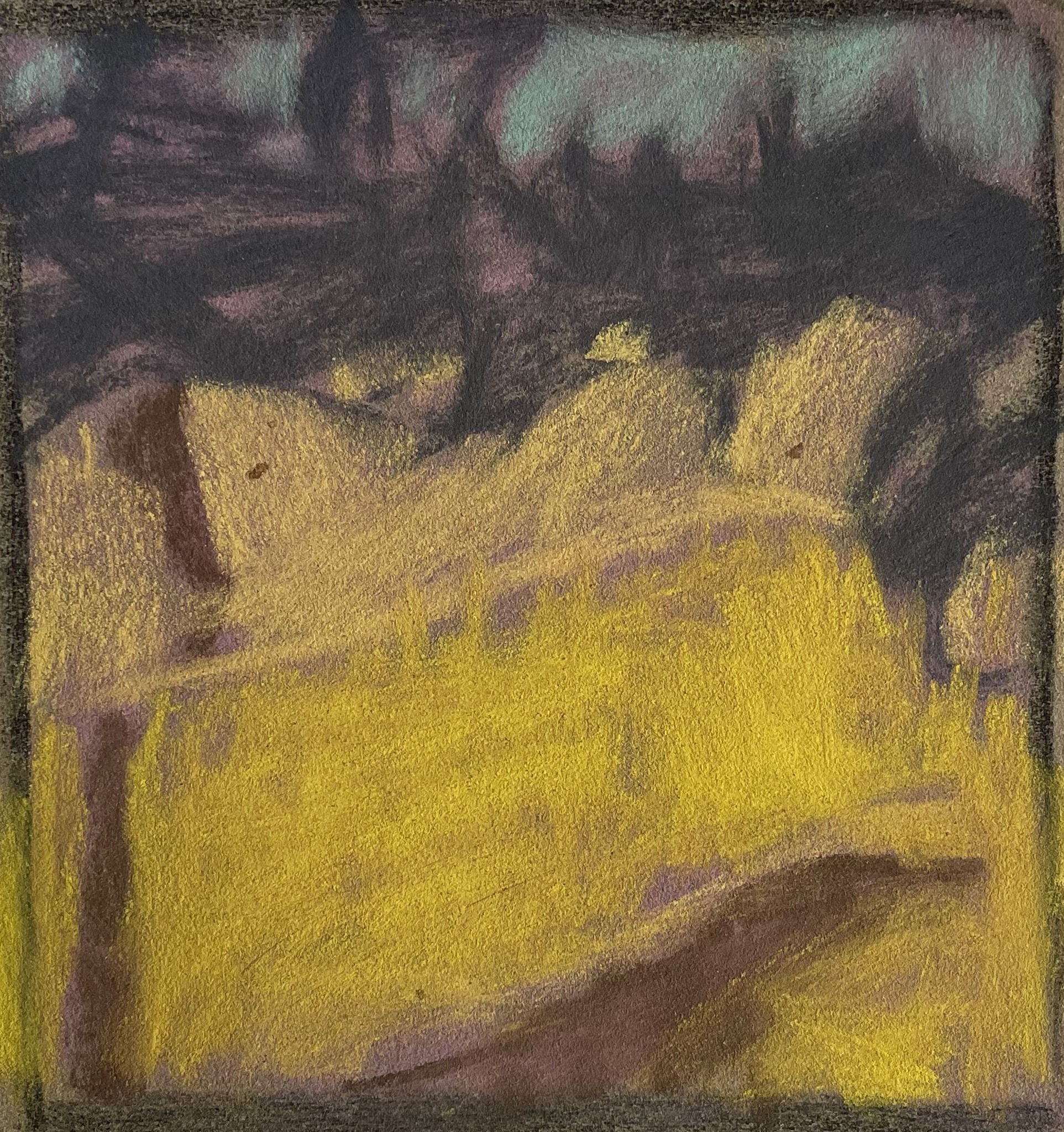
In the artworks I’m showing here, there are good stories about where I was, and what conditions I faced, to portray my subject. I want to say the conditions for my “capture” of the subject are felt in the end; there is rain and snow. Sometimes they contain metaphorical rain and the one below was an actual snowstorm.
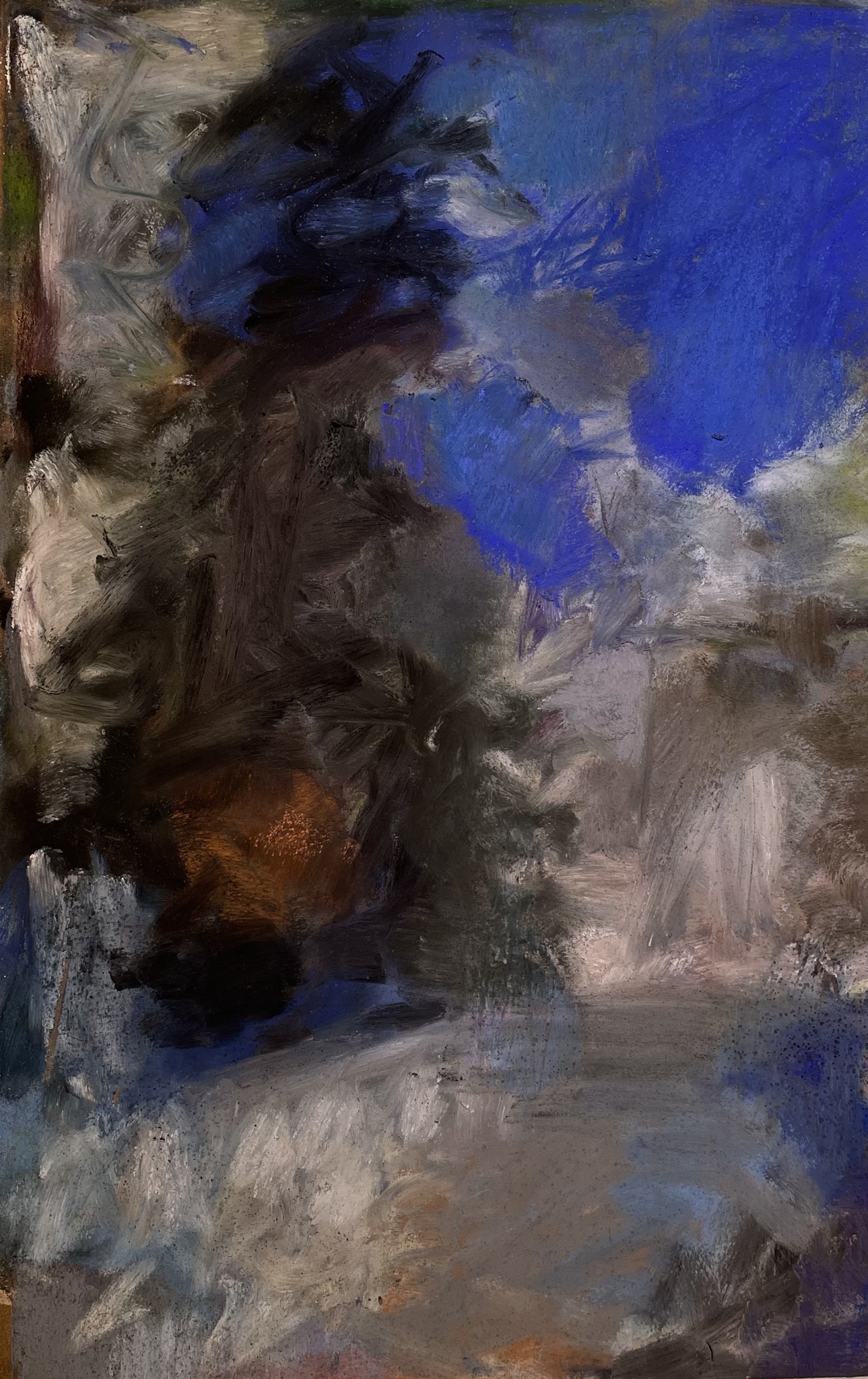
This blue “Early Winter” outside my studio door was a blizzard, really, and I know I was looking through my French door to my little studio out at high winds and a 12-inch snow dump! I was sometimes outside, but of course, I couldn’t get the paper wet, so I ducked in and out. Of course, the work was finished on the easel but the scene was mentally, and literally, right behind me and out the door.
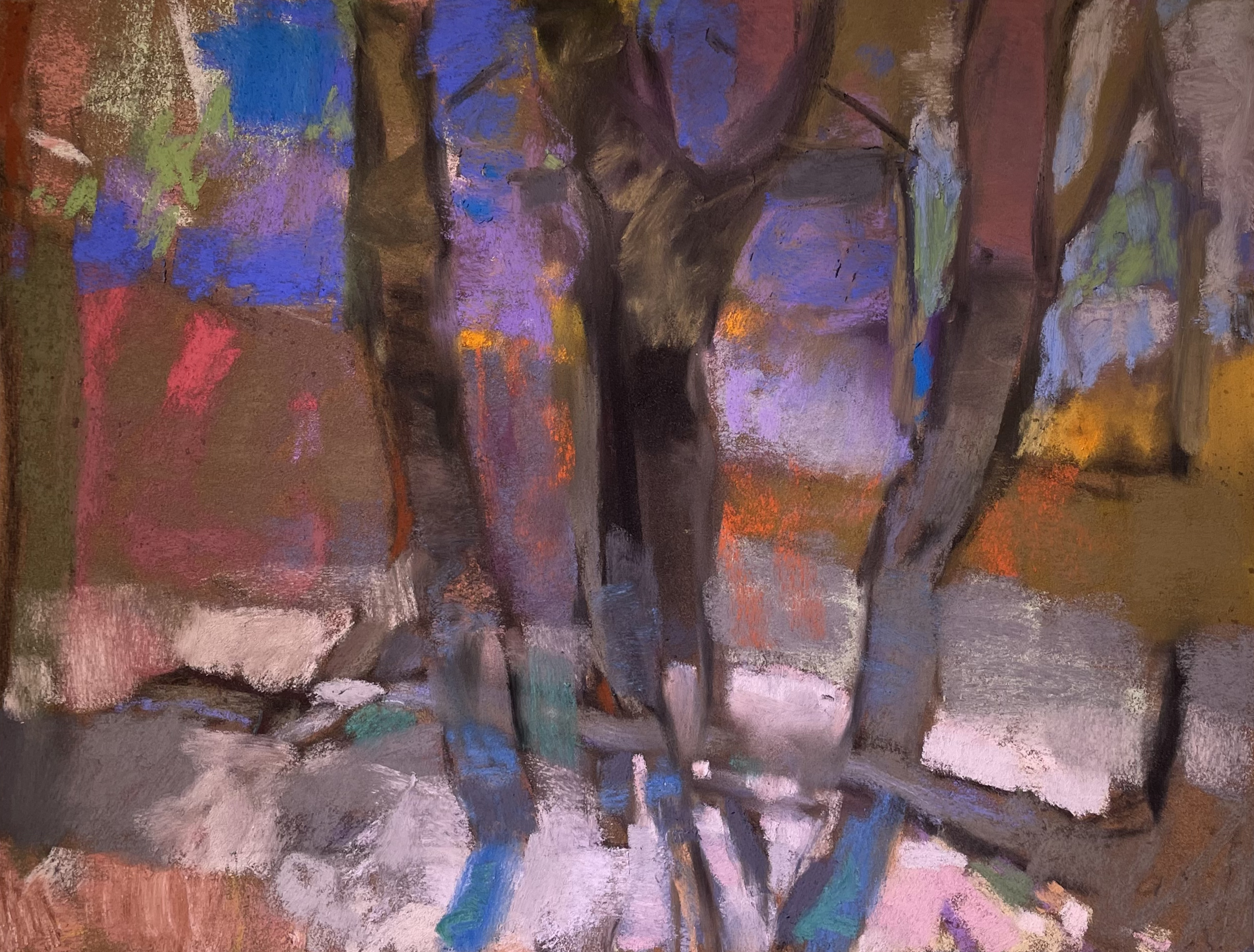
This artwork is of the same scene out my studio door. It was begun in Early Winter (or actually Late Autumn but we had lots of early snow), during a Zoom workshop demo, and finished over a month later around Christmastime. None of the three paintings above had any sort of photograph between me and the subject.
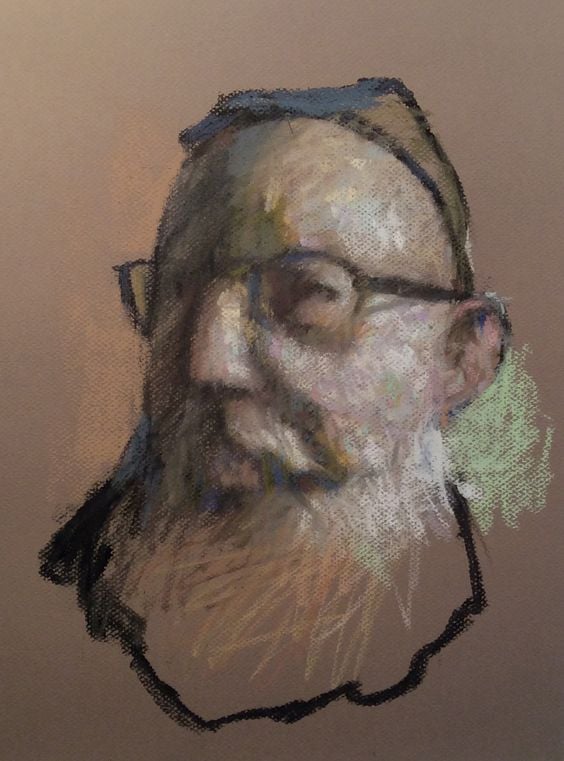
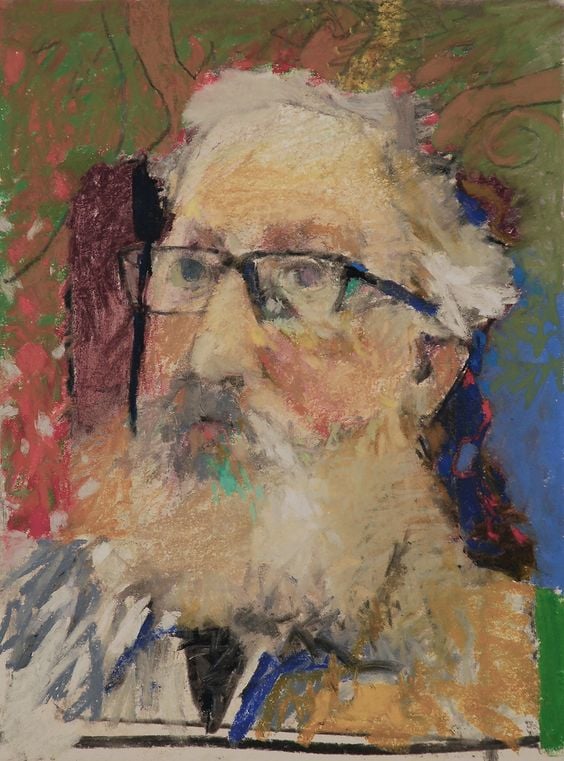
These two self-portraits tell two different stories. Rembrandt Lighting one has a good form because I lit it in that angled quartering way, and, using a mirror in my studio, I got the capture. In over a hundred self-portraits, I believe I have had only one or two photographic sources.
The second self-portrait, titled The Snail, was one of those in which I snapped a selfie in the mirror of my hallway outside my bedroom. It has more detail than Rembrandt Lighting but is flatter in form. The conditions you suffer when you work for the sketch-in become integral to the picture; absent the conditions, you miss so much.
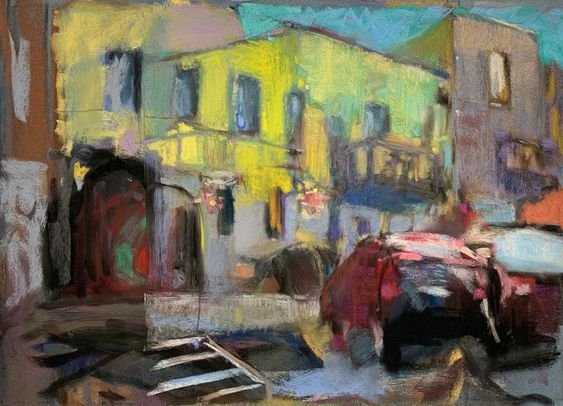
In the Yellow Wall urban scene above, I slipped out the side door of a restaurant in Spokane, Washington, while my daughter’s friend was singing there. I had a pencil and a napkin in hand; this scene would’ve been so easy to record with my iPhone, but why? The sketch on the napkin became the design for this cityscape. I can’t say I didn’t have a photo back-up; I can’t recall that, but at any rate, the sketch set the scene for me.
Bring your best efforts to render your subjects, and let nature give what she has for you. Add memory, struggle, and time, and see what comes from your hard work!
~~~~~
Thanks so much, Casey for this creative prompt! I think you’ve inspired a lot of us to a) get things down quickly in a sketch rather than picking up the smartphone for a snapshot and b) try relying on memory more!
________________________________________________________________________
Sargent in Spain
If you are lucky enough to live in the San Francisco, California area, I hope you’ll take in the show that’s on its way to the Fine Arts Museums of San Fransisco/Legion of Honor having just finished at the National Gallery of Art in Washington, DC, USA.
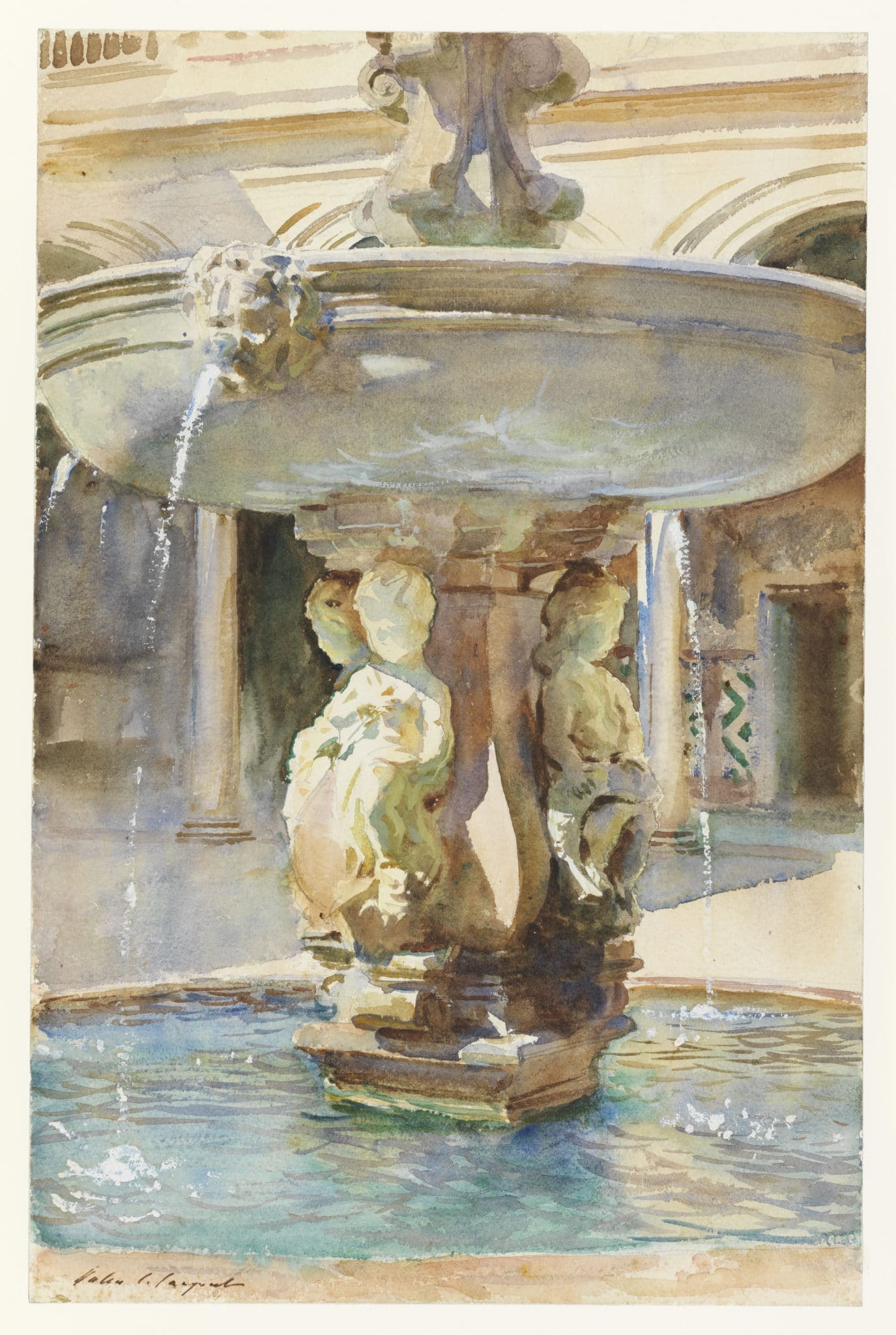
A description from the NG website:
Celebrated as the leading society portraitist of his era, John Singer Sargent influenced a generation of American painters. His personal captivation with Spain resulted in a remarkable body of work that documents his extensive travels from the north to the south and to the island of Majorca. Over three decades Sargent responded to the country’s rich culture by producing landscapes and marine scenes, pictures of everyday life, and architectural studies, as well as sympathetic portrayals of the locals he encountered.
The exhibition includes oils, watercolours, and drawings, many of which have rarely been exhibited, plus 28 never-before-published photographs from the artist’s travels, several almost certainly taken by Sargent himself.
For more info, have a read of the article my editorial colleague Christopher Volpe wrote about the show on our sister publication Inside Art.
Here’s a wonderful trailer for the show. It may even get you dancing!
I’m a HUGE fan of Sargent’s work and ohhhhh I’d love to make the trip to see this exhibition!!
That’s it for this time,
Gail
